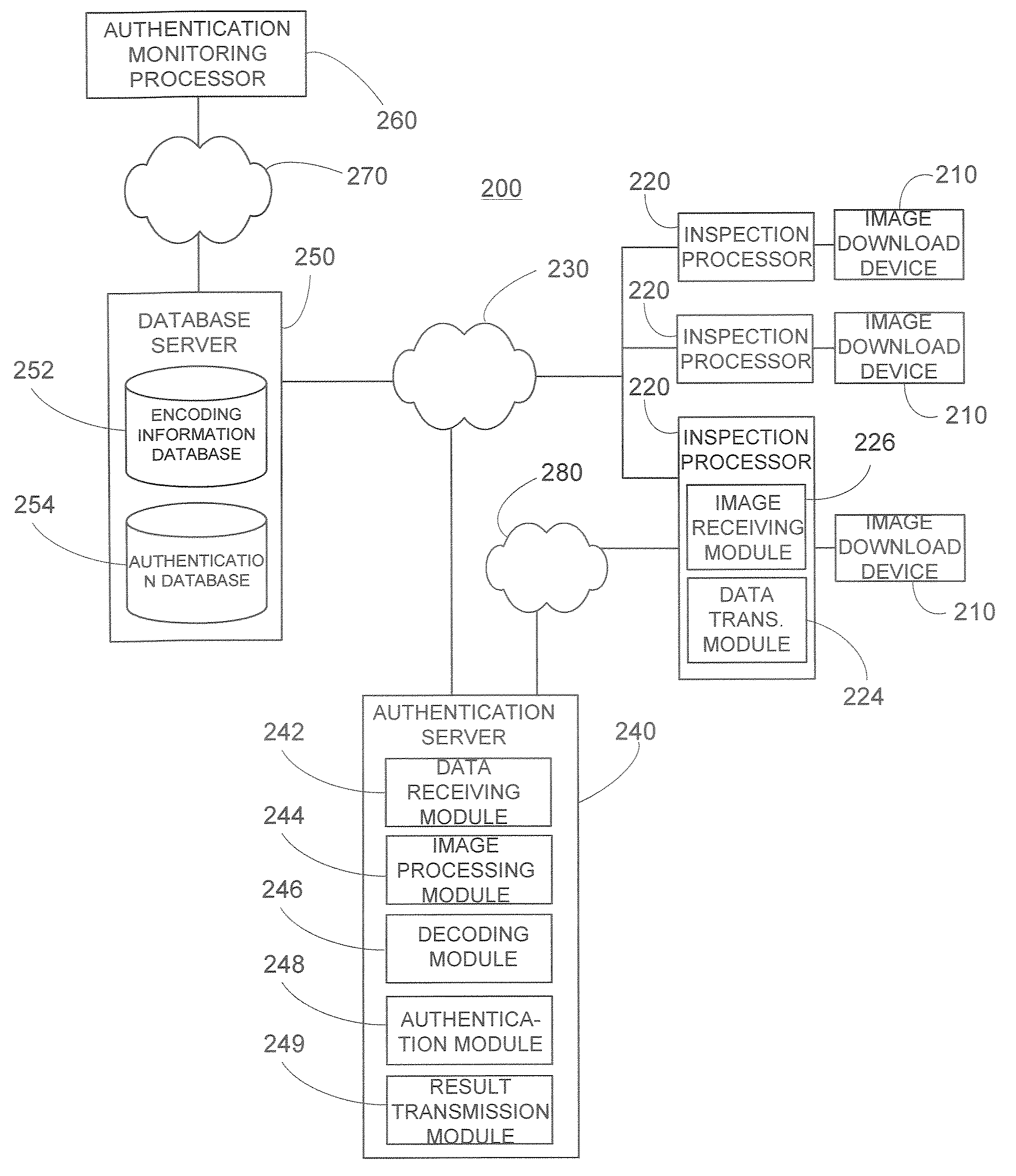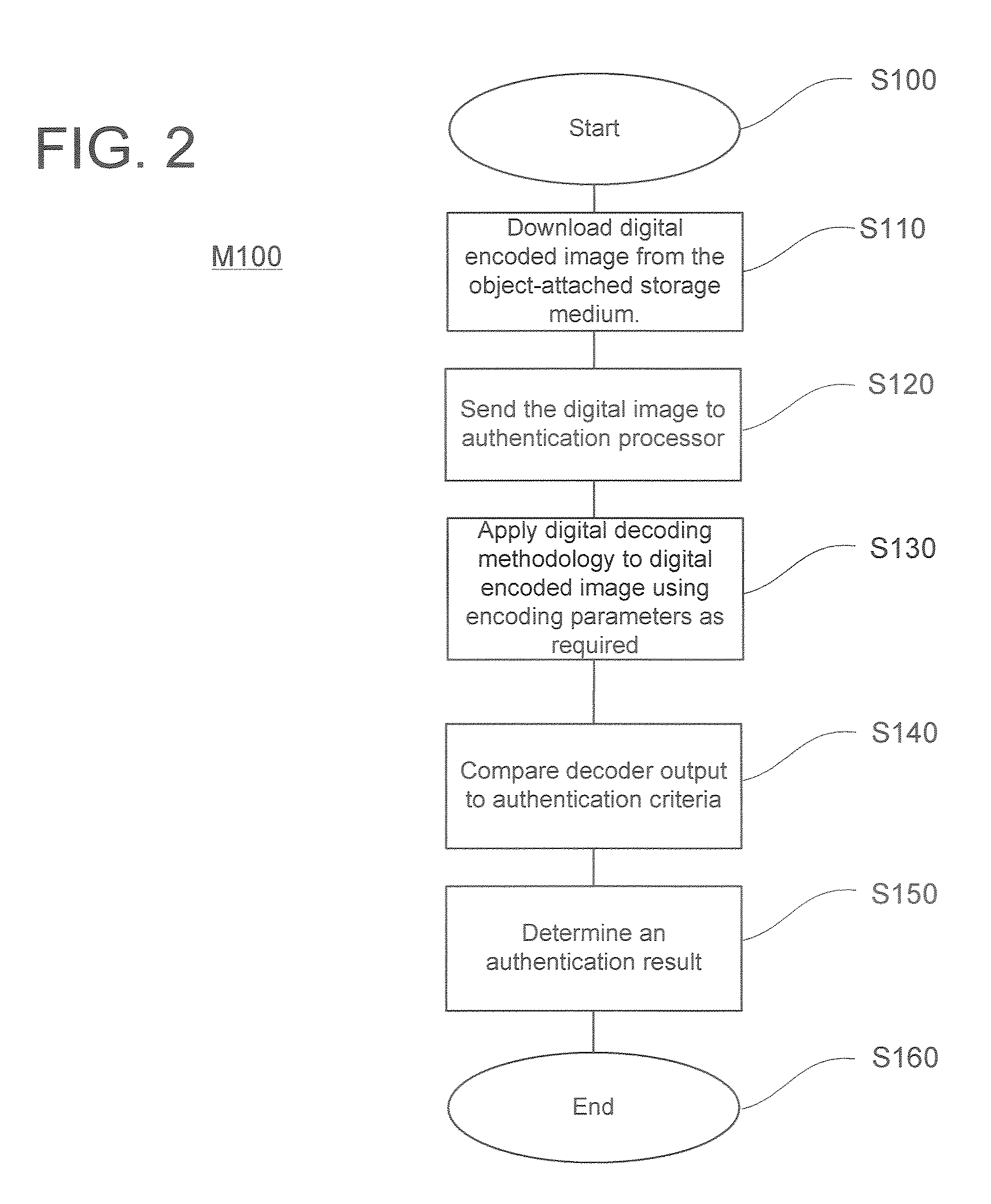Object Authentication Using Encoded Images Digitally Stored on the Object
an encoded image and object technology, applied in the field of object authentication, can solve the problems of inflexible tools, inherent limitations, and easy tampering with the information on the document or label
- Summary
- Abstract
- Description
- Claims
- Application Information
AI Technical Summary
Problems solved by technology
Method used
Image
Examples
Embodiment Construction
[0015]The present invention provides systems and methods for authenticating documents, commercial products and other objects using optically decodable encoded images. More specifically, the invention provides for authentication using encoded images stored in digital form in a storage medium or chip applied to or otherwise attached to the objects requiring authentication. These digitally stored encoded images can be downloaded or read in digital form at an inspection station and decoded using a software-based decoder. The decoded image can then be used to authenticate the object in any of various ways including but not limited to visual or automated comparison with indicia printed on the object itself, comparison with other authentication images (e.g., a decoded scanned-in image of a portion of the object) or comparison of extracted data to known information associated with the object.
[0016]Some object authentication methods using software-based decoders are described in U.S. patent ...
PUM
 Login to View More
Login to View More Abstract
Description
Claims
Application Information
 Login to View More
Login to View More - R&D
- Intellectual Property
- Life Sciences
- Materials
- Tech Scout
- Unparalleled Data Quality
- Higher Quality Content
- 60% Fewer Hallucinations
Browse by: Latest US Patents, China's latest patents, Technical Efficacy Thesaurus, Application Domain, Technology Topic, Popular Technical Reports.
© 2025 PatSnap. All rights reserved.Legal|Privacy policy|Modern Slavery Act Transparency Statement|Sitemap|About US| Contact US: help@patsnap.com



